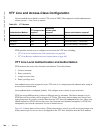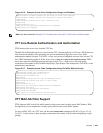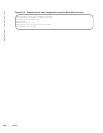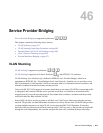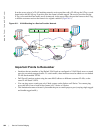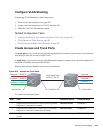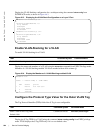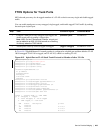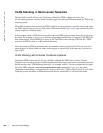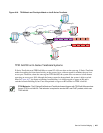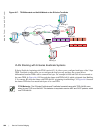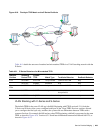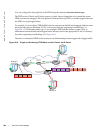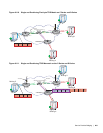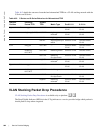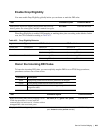956 | Service Provider Bridging
www.dell.com | support.dell.com
VLAN Stacking in Multi-vendor Networks
The first field in the VLAN tag is the Tag Protocol Identifier (TPID), which is two bytes. In a
VLAN-stacking network, once the frame is double tagged, the outer tag TPID must match the TPID of the
next-hop system.
While 802.1Q requires that the inner tag TPID is 0x8100, it does not require a specific value for the outer
tag TPID. Systems may use any two-byte value; FTOS uses 0x9100 (Figure 46-6) while non-Dell Force10
systems might use a different value.
If the next-hop system’s TPID does not match the outer-tag TPID of the incoming frame, the system drops
the frame. For example, in Figure 46-6, the frame originating from Building A is tagged VLAN RED, and
then double-tagged VLAN PURPLE on egress at R4. The TPID on the outer tag is 0x9100. R2’s TPID
must also be 0x9100, and it is, so R2 forwards the frame.
Given the matching-TPID requirement, there are limitations when you employ Dell Force10 systems at
network edges, at which, frames are either double tagged on ingress (R4) or the outer tag is removed on
egress (R3).
VLAN Stacking with E-Series TeraScale Systems
The default TPID for the outer VLAN tag is 0x9100. Although the TPID field is 16 bits, E-Series
TeraScale only uses the first eight to make forwarding decisions, and as such makes no distinction between
0x8100 and any other TPID beginning with 0x81, for example, 0x8181. You can configure the first eight
bits of the TPID using the command
vlan-stack protocol-type command. In Figure 46-6, the frame
originating from Building C is tagged 0x9191 on egress of R1. R2’s TPID is 0x9100, but it its an E-Series
TeraScale system and makes no distinction between 0x9191 and 0x9100, so it forwards the frame.



